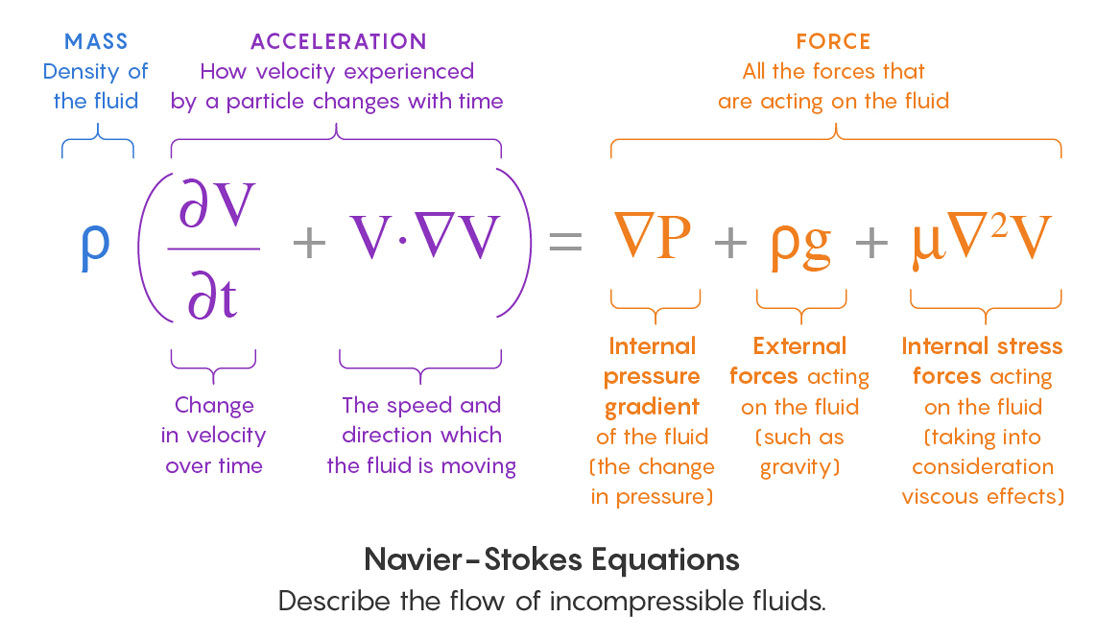Last Updated on October 8, 2024 by Zinab Hasssan
Physics is the science of nature that describes how the universe works around us, starting from the atoms to the giant galaxies through physics equations. Scientists try to understand natural phenomena and explain how the universe works.
Among the myriad equations that describe the fundamental forces and phenomena of nature, some stand out not just for their significance but for their sheer complexity. The hardest physics equations challenge our understanding and push the boundaries of mathematical and physical knowledge.
Join us as we explore the depths of these challenging equations and the quest for solutions that could unlock new realms of physics.
Factors for Determining the Hardest physics Equation
Determining the hardest physics equation depends on factors, such as:
- Understanding Level: The difficulty of an equation can depend on the individual’s mathematical background and problem-solving skills.
- Context: The context in which the equation is used can also influence its difficulty.
- Unsolved Status: The equation’s status as unsolved can determine its difficulty. Equations that remain unsolved are considered harder due to the ongoing challenge they present to mathematicians.
- Required Methods for Solution: The techniques or methods required to solve an equation can also determine its difficulty. Some equations may require advanced mathematical tools or concepts.
Explore One of the Hardest Physics Equation


One of the hardest physics equations is the Navier-Stokes equations that describe the flow of fluids, from simple flows like water running from a faucet to complex turbulent patterns like those seen in hurricanes. Despite their simplicity in appearance, the Navier-Stokes equations are incredibly difficult to solve, especially for turbulent flows.
They are considered very hard physics equations and so mathematically challenging. The Clay Mathematics Institute chose it as one of seven “Millennium Prize Problems” endowed with a $1 million reward to the first person providing a solution for a specific statement of the problem.
An example of a non turbulent flow is a smooth river: Every part of the river moves in the same direction at the same speed. A turbulent fluid is the fracturing of that river, so that different parts of the flow move in different directions at different velocities.
Physicists describe the formation of turbulence as, first, an eddy in a smooth flow, and then the formation of eddies within that eddy, and yet finer eddies within those eddies – eddies all the way down, so that the fluid becomes broken into discrete parts, all interacting, each moving its own way.
Researchers want to understand exactly how a smooth flow breaks down into a turbulent flow and to model the future shape of a fluid once turbulence has taken over.
The Navier–Stokes equations are partial differential equations that describe the motion of a fluid in space. Solutions to the Navier–Stokes equations are used in many practical applications. However, the theoretical understanding of the solutions to these equations is incomplete. In particular, solutions of the Navier–Stokes equations often include turbulence, which remains one of the greatest unsolved problems in physics, despite its immense importance in science and engineering.
Even more basic properties of the solutions to the Navier–Stokes equations have never been proven. For the 3D system of equations, and given some initial conditions, mathematicians have neither proved that smooth solutions always exist, nor found any counter-examples. This is called the Navier–Stokes existence and smoothness problem.


Sources:
Navier–Stokes existence and smoothness |Wikipedia
What Makes the Hardest Equations in Physics So Difficult? | Quantamagazine
PraxiLabs Helps You Conduct 3D Science Experiments Anywhere Via Interactive Virtual Labs .. Try Now!
What is the hardest equation in the world?
To detect what makes an equation the “hardest,” several factors play a vital role. Here are some factors to consider when detecting “What is the hardest equation in the world?”:
Complexity of the Equation
Unsolved Status
Historical Significance
Applicability and Impact
Required Techniques for Solution
What is the most powerful physics formula?


Einstein’s Energy-Mass Equivalence (E = Mc2 ) is considered one of the most powerful physics formula, where:
E — The kinetic energy of that body
M — The mass of the body
c2 — The speed of light squared
The equation describes the fact that mass and energy are the same physical entity and can be changed into each other. According to the equation, the increased relativistic mass (m) of a body times the speed of light squared (c2) is equal to the kinetic energy (E) of that body.
Start Your 30-Day Free Online Laboratory Trail
What is the hardest physics problem in the world?


Quantum gravity is one of the biggest unsolved and hardest physics problems in the world, exactly how gravity and the quantum will be made to coexist within the same theory. Quantum Gravity is required to make the whole of physics logically consistent. The problem is that quantum physics and general relativity already overlap each other’s domains, but do not fit together.
What Is The Most Beautiful Equation in Physics?
There is a psychology experiment that revealed that mathematicians appreciate beautiful equations in the same way that people experience great works of art.
In the experiment, which conjures up a slightly comical scene, mathematicians were hooked up to a functional magnetic resonance imaging (fMRI) machine and asked to view a series of equations. When the subjects looked at equations they had previously rated as beautiful, it triggered activity in a part of the emotional brain associated with the experience of visual and musical beauty.
The formula most commonly rated as beautiful in the study, in both the initial survey and the brain scan, was Euler’s equation, eiπ+ 1 = 0.
A Closer Look at PraxiLabs Physics Experiments Virtual Labs


PraxiLabs offers a wide variety of virtual labs for physics science experiments, providing a broad spectrum of learning opportunities:
- Properties of matter virtual labs
Archimedes Principle Virtual Lab Simulation
Young’s Modulus for a Metallic Rod Virtual Lab Simulation
Determination of Coefficient of Viscosity by Stokes Method
Density Measurement Virtual Lab Simulation
Focal Length of a Convex Lens Using General Law Virtual Lab Simulation
Simple Pendulum Virtual Lab Simulation
Hooke’s Law Virtual Lab Simulation
Speed of Sound Using Open Columns Virtual Lab Simulation
Speed of Sound Using Closed Columns Virtual Lab Simulation
Forced Oscillations
- Modern physics virtual labs
Black Body Radiation Virtual Lab Simulation
Laser Beam Divergence Virtual Lab Simulation
Laser Electro-Optic Effect Virtual Lab Simulation
Millikan Oil Drop Virtual Lab Simulation
Michelson’ Interferometer Virtual Lab Simulation
I-V Characteristics of Solar Cell (I) Virtual Lab Simulation
I-V Characteristics of Solar Cell (lI) Virtual Lab Simulation
I-V Characteristics of Solar Cell (llI) Virtual Lab Simulation
Zeeman Effect Virtual Lab Simulation
Band Gap Energy of Semiconductors
- Heat and thermodynamics virtual labs
Specific Heat of Solids Virtual Lab Simulation
Boyle’s Law of Gases Virtual Lab Simulation
Joule’s Experiment Virtual Lab Simulation
Free Fall Virtual Lab Simulation
Motion on Inclined Surface Virtual Lab Simulation
Ballistic Pendulum Virtual Lab Simulation
Newton’s Second Law
Linear Motion
Magnetic Moment of a Bar Magnet Virtual Lab Simulation
Magnetic Field of a Circular Loop Current Virtual Lab Simulation
Temperature Coefficient of Resistance
Magnetic Force on a Wire
Determination of unknown capacitance and inductance using phasor diagrams and AC circuits
Measurement of Ohmic Resistances Using Ammeter and Voltmeter
Study the I-V Characteristics of Non-Ohmic Resistance Simulation
Kirchhoff’s Loop Rule Virtual Lab Simulation
RC Circuit (Charging Capacitor) Virtual Lab Simulation
RC Circuit (Discharging Capacitor) Virtual Lab Simulation
Variation of the Resistance of a Thermistor with Temperature
Electrostatic Demonstration
Faraday’s Law
Parallel Plate Capacitor
Request a Demo Now and Increase your Students’ Learning Retention and Engagement!




